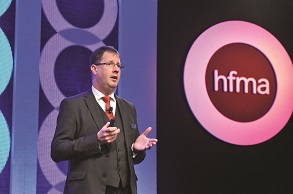News / Questions over outpatient block payment move
 NHS England and NHS Improvement made the proposal in its early engagement documents on the two-year tariff for 2017/18 and 2018/19. They said the national mandated price would be removed and replaced with local agreements on a single payment for all follow-ups.
NHS England and NHS Improvement made the proposal in its early engagement documents on the two-year tariff for 2017/18 and 2018/19. They said the national mandated price would be removed and replaced with local agreements on a single payment for all follow-ups.
Other key proposals included a two-year tariff, covering 2017/18 and 2018/19; the introduction of a new currency – HRG4+ phase 3; smoothing to reduce the impact of changes in prescribed specialised services; and changes to maternity payments.
In its response to the engagement documents, the HFMA said it was surprised to see the outpatient proposal at a time when the service was trying to move away from unaccountable block contracts in mental health.
‘We understand the need to ensure outpatient follow-ups are value for money, but it is not clear how a crude currency change will achieve this,’ said HFMA policy and technical director Paul Briddock (above, right). ‘As they currently stand, the measures could incentivise trusts to minimise the use of outpatient follow-ups. But where these follow-ups are clinically appropriate, they should not face financial disadvantages. We believe the objective could be better achieved by benchmarking the activity against national data.’
He warned that the proposal could discourage providers from seeking out and moving to new, more cost-effective ways of delivering follow-up appointments, while discussions over the appropriate contract value could add to discussions and disagreements when contracts are being finalised.
The HFMA’s tariff response added that progress must be made on currencies and payment models in mental health. There was concern that a number of health economies were some way from introducing new or different arrangements.
The association welcomed the proposed move to a two-year tariff, though it said assumptions about cost inflation, Clinical Negligence Scheme for Trusts premiums and efficiency must be clear, transparent and evidence-based.
Developments in medical practice, technology and quality can add to costs, and simply applying an across-the-board uplift could create additional pockets of financial pressure for providers, it said.
The HFMA broadly supported the introduction of the HRG4+ phase 3 currency, recognising a number of benefits, including a period of stability following its introduction and the use of more up-to-date reference cost information to calculate prices – under the proposals 2014/15 reference costs would be used.
It also backed separate work on understanding and correcting orthopaedic prices and specialist top-ups. However, the move would be a fundamental change and it would be difficult to work out its impact because of other changes that are being proposed.
Education tariff freeze
Tariffs for non-medical placements and medical undergraduate and postgraduate placements in secondary care have effectively been frozen in 2016/17.
In guidance on the tariffs, published in August, Health Education England (HEE) said it faced cost pressures due to an overall 4% rise in student numbers in the past two years. There were other unavoidable cost pressures, such as the increase in medical and dental student tuition loans from £3,000 to £9,000 a year.
As a result, HEE will reduce the 2016/17 tariff for each type of placement by 2% compared with the 2015/16 prices. However, as this could destabilise some NHS providers – and to reflect the late confirmation – in 2016/17 it will include an additional payment of 2% for each tariff, bringing them up to 2015/16 levels.
Both the new tariff and the additional payment will be adjusted by the appropriate market forces factor to calculate the final payment.
The 2016/17 tariff price will be the starting point for calculating the 2017/18 tariffs.
Related content
We are excited to bring you a fun packed Eastern Branch Conference in 2025 over three days.
This event is for those that will benefit from an overview of costing in the NHS or those new to costing and will cover why we cost and the processes.